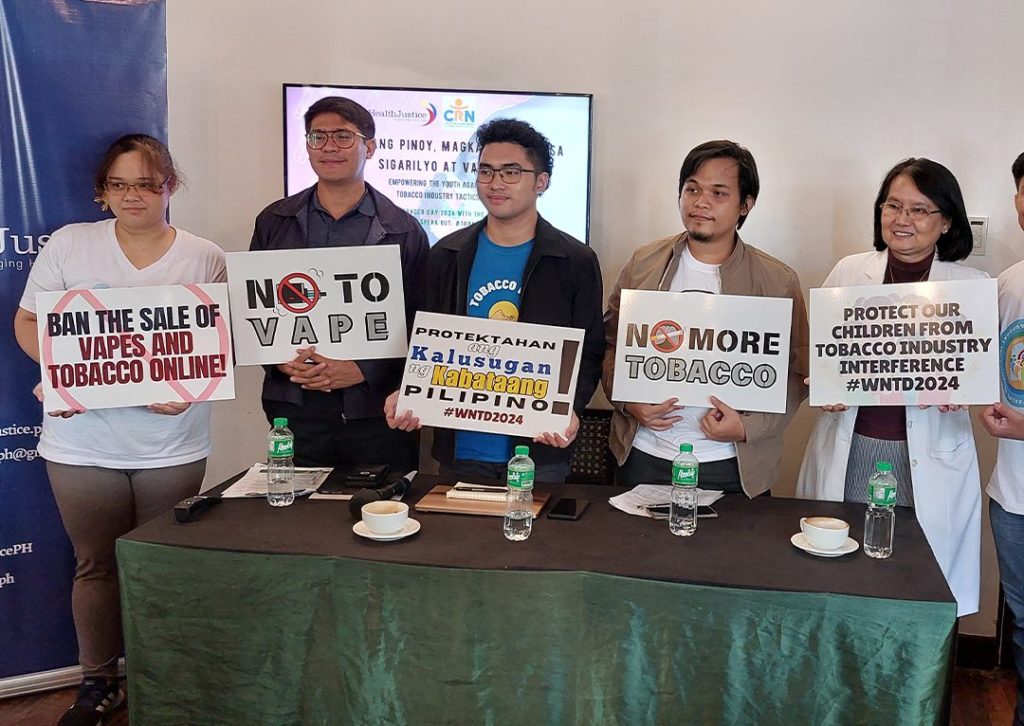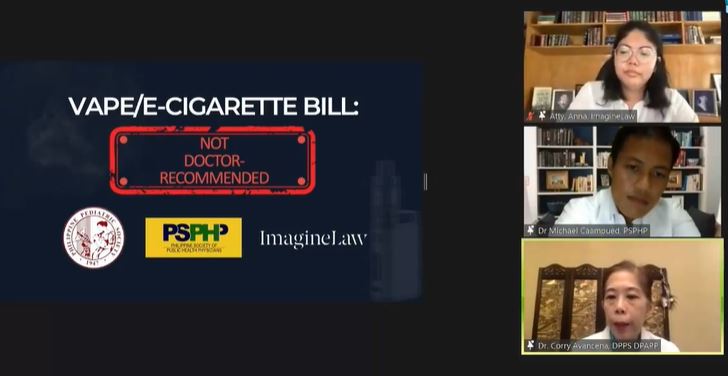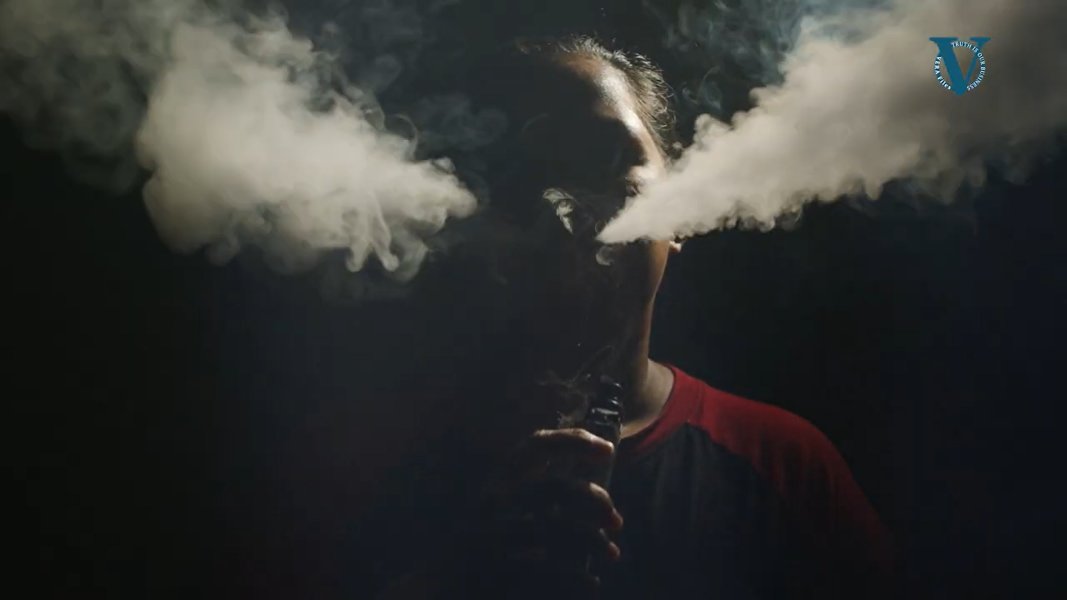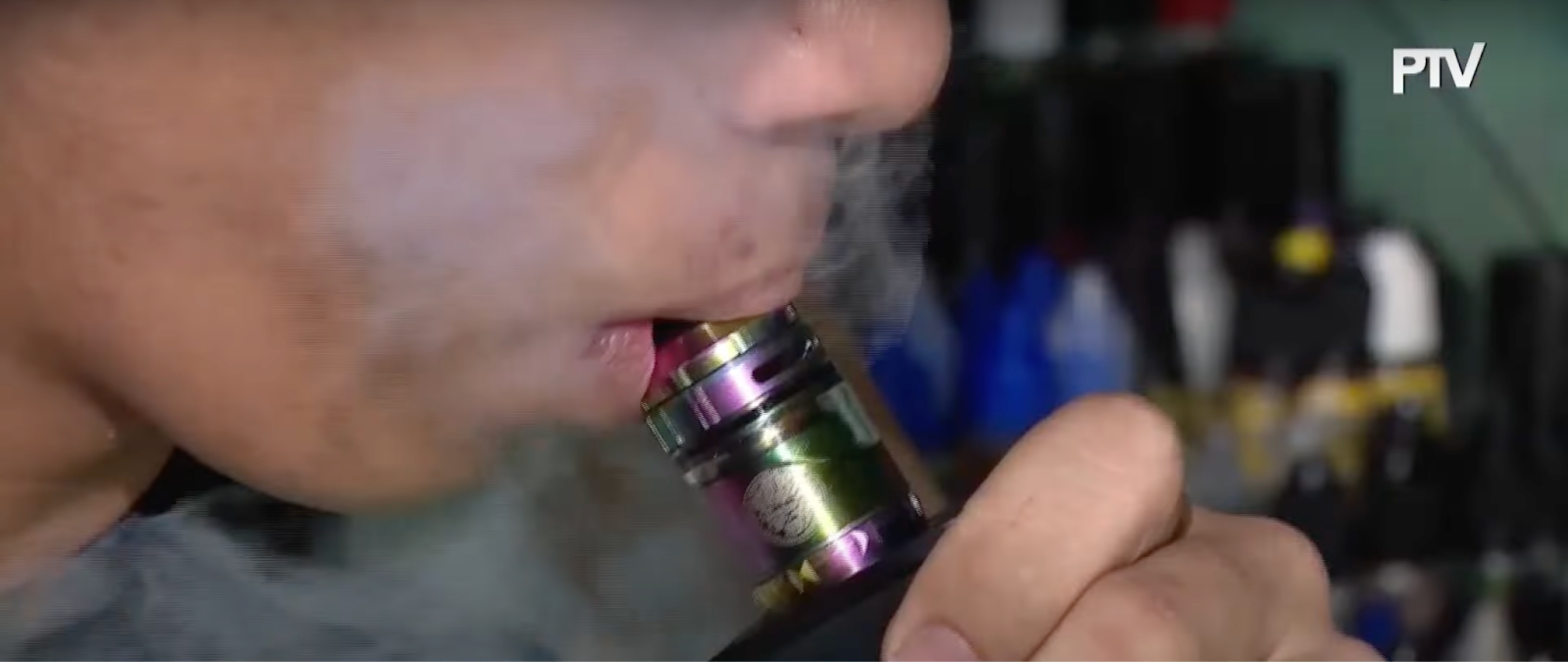
Luis was 17 when he first puffed vape. It was the new cool thing among his high school peers that he could not help but try.
But six years on, what started as an experiment became a habit. From occasionally taking a hit from his friends’ vape pods, Luis, now 23, owns a disposable vape which he uses to consume 30 milliliters of nicotine-filled vape juice every week.
“I started vaping just like other kids who wanted to look cool,” Luis, who requested anonymity due to his job at a cybersecurity firm, told VERA Files. “Now I use it to cope with stress from work and it helps me stay productive.”
But in recent years, more teenagers start vaping much younger than when Luis did. Data from the 2019 Global Youth Tobacco Survey showed that around 1.6 million Filipino children aged 13 to 15 use electronic cigarettes or vapes, more than double the figures recorded in 2015.
Health experts and youth groups have sounded the alarm over an upsurge in children’s vape use, saying it is primarily driven by the tobacco industry’s covert marketing tactics that target young people and the government’s weak regulation over the sale of vapes, especially online.
“Tobacco companies see the youth as the future of their businesses so they always make sure that their product advertisements would look cool to them. Before they relied on models with good bodies, now their new tactic is to use social media influencers,” said Von Defuntorum of the Philippine Smoke-Free Movement Youth in a May 24 press briefing ahead of “World No Tobacco Day.”
The World Health Organization marks May 31 of every year as “World No Tobacco Day” to draw global attention to health risks from widespread tobacco use. This year, the event highlights the need to protect the youth from tobacco industry interference.
Dr. Rizalina Gonzalez, chairperson of the Philippine Pediatric Society’s Tobacco and Nicotine Control Advocacy Group, explained that risk-taking and pleasure-seeking behaviors are more pronounced during adolescent years, hence teenagers could easily be enticed to use vapes.
“Vape pods now are very creative–they are small, sleek and accessible. They are also affordable. When it goes on sale on Lazada or Shopee, children can easily get it without undergoing age verification,” Gonzalez said during the briefing organized by HealthJustice, a public health think tank.

Luis said online vape shops are a cheaper option since prices tend to be slashed by almost half. He once saw a vape juice priced at P250 in physical stores for just P150 in an e-commerce site.
Republic Act No. 11900 or the Vape Regulation Law prohibits the sale of vapes and electronic cigarettes to people below 18 years old. However, such restrictions could be easily bypassed in online shopping platforms.
Related: Vape bill exposes young ‘vulnerable’ consumers to health risks, endangers already weak enforcement
The loose enforcement of such restrictions is not new. In 2020, Luis was still able to buy vape products both in physical and online stores despite only being 19, two years younger than what used to be a 21-year old age restriction.
The vape law signed in 2022 reduced that age limit by three years. It also allowed a wide range of flavors in the market other than plain tobacco and plain menthol such as chocolate, honey and fruity flavors like mango, peach and berries, all meant to attract the youth.

Related: Vape bill version 2022: Congress ‘hijacks’ stringent regulations
“We need to safeguard children’s interests and we need stricter regulations on selling vapes. It’s difficult to regulate online sales so it’s much better to ban it altogether,” said lawyer Benedict Nisperos, legal consultant of HealthJustice.
Aside from accessibility, Roi Merca from Child Rights Network also flagged how online spaces are used to spread misinformation that vapes are healthier alternatives to cigarettes.
This is the same reason why Luis preferred vaping than smoking.
“I also tried cigarettes but the thing with it is that it stains your teeth. There were also times when I felt my chest tightened,” he said. He believes he “picked a lesser poison” with vaping because it does not make him experience these.
Others, however, were not as lucky as him.
Rising vape injuries
In 2021, HealthJustice documented a lung problem associated with vaping on 23-year-old Vince Lamson from Nueva Ecija. After vaping everyday for seven years, a chest x-ray showed that his darkened lungs were filled with smoke and full of black phlegm.
“The doctors were shocked. They asked me if I’m a heavy smoker because my lungs were not burnt. They then said I got those from vaping,” Lamson said in a video interview shown during the briefing.
Gonzalez warned that more children and young people could be at risk of developing e-cigarette or vape-use associated lung injury (EVALI) as the use and sale of vape products largely remain unchecked.
“We should not stop educating our children on the health dangers of vapes and continue debunking widespread misinformation. Vapes are not harmless nor are they a safer substitute to tobacco. They contain nicotine and other toxic substances that affect the heart and brain development of children, as well as other chemicals that are cancer-causing like that of tobacco,” Gonzalez explained.

The Department of Health (DOH) first recorded a local EVALI case in 2019 from a 16-year-old girl in the Visayas. In 2023, the Philippine College of Chest Physicians reported six EVALI cases across the country.
Gonzalez said present EVALI cases could be much higher as some remain unreported, especially in far-flung areas where diagnostic instruments are unavailable.
In a 2023 memorandum, the DOH issued interim guidelines covering the diagnosis, treatment and reporting of EVALI cases and related injuries and deaths.
While a more concrete reporting mechanism is a step toward the right direction, Nisperos noted that having the Food and Drug Administration as regulatory body, instead of the Department of Trade and Industry, would help tighten the reins on vape products.
“The problem with the law is that it made e-cigarettes and vapes as consumer products so it’s open for everyone. We have to make it a health product because we use it in our body,” Nisperos said.
Nisperos also urged policymakers to amend what he referred to as a “watered-down” Vape Regulation Law.
“We demand that our policymakers take swift action now to prevent harming the health of our future generation. Otherwise, the possible repercussions of youth addiction could be worse in the next three to five years,” he added.
Defuntorum encouraged the youth to actively participate in mainstreaming the harmful effects of vape and e-cigarette use.
“Our youth leaders and other youth-led organizations should unite and join the fight against this [vape epidemic]. Let’s help raise awareness to our fellow young people so they may not fall for the trap and lies that tobacco companies fabricate.”
For his part, Luis said he is aware of health issues that vaping could bring. He plans to stop one day but admits it is easier said than done.
“I’m vaping just for convenience. For me to work nicotine-free, I would need to find an alternative to vaping. Maybe this could be food, a drink or another hobby,” he said after clearing his throat.





